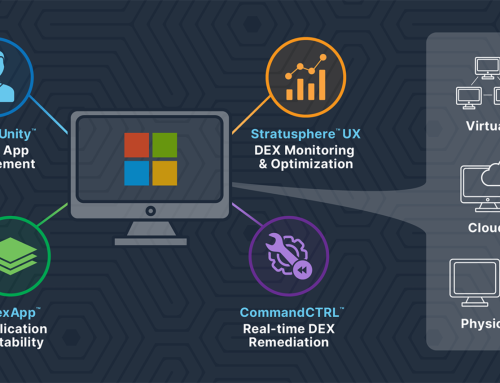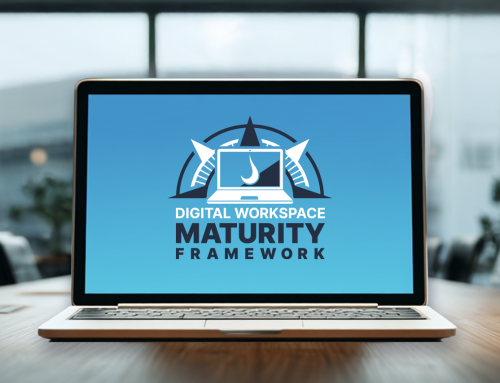1) Profile Compatibility: A Windows XP profile is not compatible with a Windows 7 profile. Now most of you know that but did you know that a Windows 7 profile is not compatible with Windows 8 or 8.1? If you are using Microsoft’s profile solution you can only go forward from Win 7 to Win 8, which will work for some use cases but if you want to co-exist you have to look for a third party product like ProfileUnity that can do that seamlessly. Disclaimer: ProfileUnity currently has beta support for Windows 8 with full support coming soon.
2) Profile Bloat: Profiles can bloat to an unmanageable size. What you may not know is that a lot of the data in a user profile is cached information that is truly not needed for a robust user experience. A lot of products only preserve a profile and make them “available” without any true profile “management,” with no way to combat bloat for sluggish performance or storage consumption. When choosing a solution to manage your profile, or full User Management, choose one that can granularly “manage” the profile. A solution like ProfileUnity can exclude those bloated cached areas and redirect, as well as perform a background migration, of user authored data such as My Documents and Desktop folders.
 3) Profile Corruption: It’s not a pink unicorn!: Profile Corruption really does occur with Microsoft Roaming Profiles, and point profile solutions from VDI platform vendors. Typical profile corruption occurs because these products leverage the Microsoft NTUSER.DAT file to store the system registry and to track profile changes. Sometimes when using these entry-level tools, writing data to the profile can be interrupted such as an interrupted log-off or log-on. If data writing to a profile does not match up to the info in the NTUSER.DAT file it is inconsistent. When this inconsistency happens the profile is not available. This often results in a “Temporary Profile” being assigned to the user and the profile is deemed “corrupted” because it will not load. Most full blown User Management solutions like ProfileUnity do not utilize the NTUSER.DAT file, therefore users do not experience typical “Profile Corruption.” When choosing a profile management solution or a full user management solution, ensure that the product can have an automatic or manual roll-back if anything should happen to the user’s profile info….even if it is self-inflicted by the user.
3) Profile Corruption: It’s not a pink unicorn!: Profile Corruption really does occur with Microsoft Roaming Profiles, and point profile solutions from VDI platform vendors. Typical profile corruption occurs because these products leverage the Microsoft NTUSER.DAT file to store the system registry and to track profile changes. Sometimes when using these entry-level tools, writing data to the profile can be interrupted such as an interrupted log-off or log-on. If data writing to a profile does not match up to the info in the NTUSER.DAT file it is inconsistent. When this inconsistency happens the profile is not available. This often results in a “Temporary Profile” being assigned to the user and the profile is deemed “corrupted” because it will not load. Most full blown User Management solutions like ProfileUnity do not utilize the NTUSER.DAT file, therefore users do not experience typical “Profile Corruption.” When choosing a profile management solution or a full user management solution, ensure that the product can have an automatic or manual roll-back if anything should happen to the user’s profile info….even if it is self-inflicted by the user.
4) There is Profile Management and then there is User Management: Don’t be confused when shopping for a solution to help you manage users. Profile Management products typically only make a profile available and only allow limited, if any, management of the profile. User Management solutions like ProfileUnity offer in-depth profile management, context aware configurations such as location aware printer mapping, and advanced features such as a deluxe replacement to most things that could be troublesome to accomplish with Microsoft Group Policies alone.
5) Long Logon and Logoff times – your users no longer need to suffer: There are plenty of ways to speed up user profiles. Entry-level alternatives to roaming profiles stream a profile….but then you get a logon hit AND you get a delay in application response time every time the profile is storage is polled for more information. Ummm, yeah, no vendor that does this tells you about the application response time lag. Most of these are also susceptible to profile corruption. Other alternatives use a complex array of dedicated databases and IIS servers to essentially stream user data. These solutions typically need to be replicated and require many more servers to scale to thousands of users. ProfileUnity can speed up your profiles dramatically through a fast and efficient compression algorithm that even supports offline use cases and through precise redirects of data that can be redirected for “on-network” Windows machines.
There you have it, 5 things you must know about User Profile Management from years of consulting with literally hundreds of customers and partners like you. Comments are welcome.








Nice article, though please correct this sentence: ” AND you get a delay in application response time every time the profile is storage is poled for more information”
Thank you, spelling has been corrected for polled.